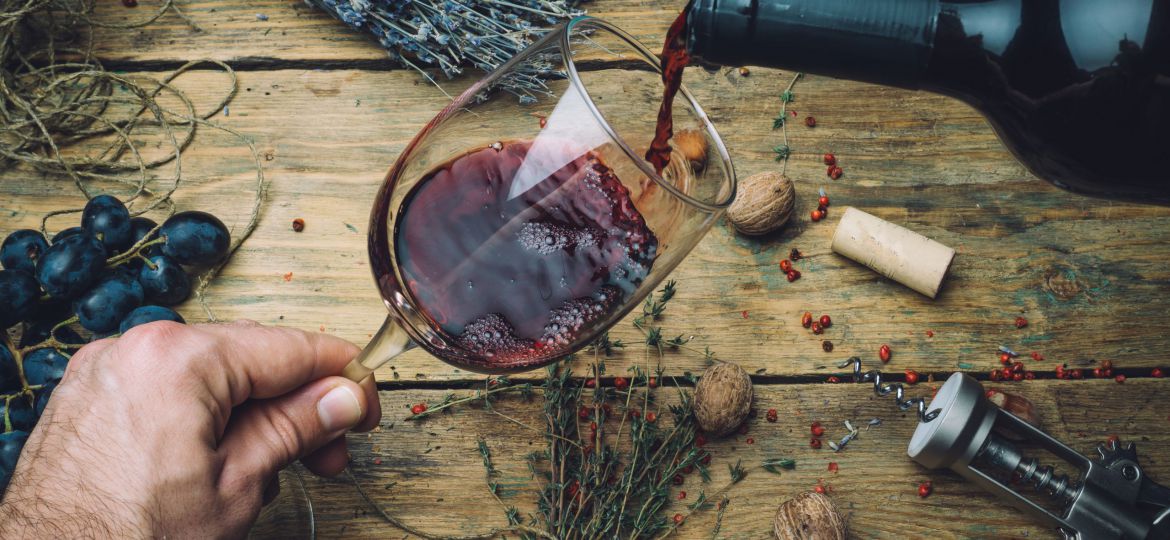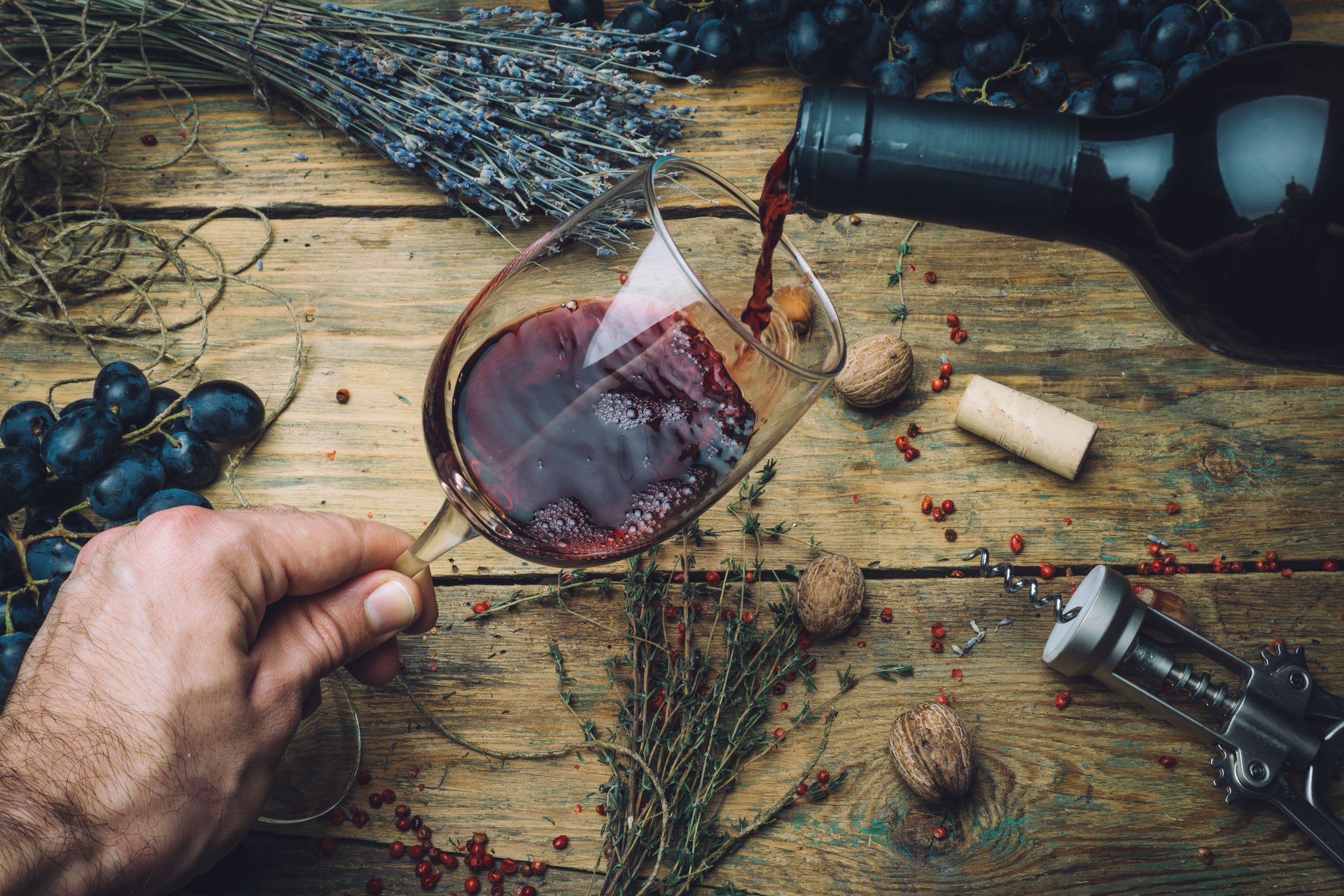
Fresh, fruity and accessible wines
Gamay, a fresh grape variety
Gamay, the king of Beaujolais grapes, is one of the most expressive when it comes to conveying the deliciousness of ripe red fruit. This early-maturing grape variety, often underestimated, nonetheless offers profiles of great freshness and supple tannins, making it particularly enjoyable when young.
Probably the result of a cross between Pinot Noir and Gouais B, Gamay is grown on 33,000 hectares worldwide, including 30,000 in France, and 22,000 in Beaujolais! Gamay ‘s red fruit notes revolve around raspberry and blackcurrant, while it expresses white fruit aromas such as apple and pear, and a spicy edge.
Beaujolais winemaking and new consumers
Beaujolais vinification, known as semi-carbonic or carbonic maceration, is at the heart of this fruity identity. This unique method preserves the fruit’s primary aromas and produces crisp, light wines. This profile corresponds perfectly to the changing tastes of a new generation of consumers.
Today’s young people are looking for less tannic, more digestible wines that they can drink immediately. Less attracted by immediate complexity, they prefer straightforward, sincere wines to accompany everyday cooking or simple moments with friends. Beaujolais ticks all these boxes.
Simple wines… but not simplistic
Beaujolais red wines are often described as “simple”. But simple doesn’t mean simplistic. These are wines of direct expression, fresh, fruity and accessible, that play the obvious card with clean aromas and great drinkability.
Behind this apparent simplicity lies real expertise. Depending on the terroir – granite, schist, clay or sand – Gamay, the king grape variety, reveals an astonishing diversity: finesse, tension, suppleness or structure.
While these wines are a pleasure to drink young, they are far from simplistic. They reflect demanding viticulture, precise vinification and a terroir that has nothing to envy the great neighboring regions.
Beaujolais as a great terroir wine
And yes, in Beaujolais, you can also find more complex wines, made from specific terroirs and aged for long periods. These cuvées, while remaining typically Beaujolais in their freshness and fruitiness, offer deeper expressions. They will appeal to discerning palates, especially those looking for wines with excellent ageing potential, who love woody, mushroom or undergrowth aromas, and who wish to explore the richness of Beaujolais beyond its initial lightness.
So, do you feel like tasting? Beaujolais is much more than just a wine, it’s an invitation to share, enjoy and discover. With every sip, a new story to savor together!
Latest magazine articles

Contents
The story
Burgundy’s territory has evolved over time. Millions of years ago, it was below sea level. The region’s clay-limestone soils are rich in marl and karstic elements. As early as the Gallic period, even before the arrival of the Roman conquerors, large quantities of wine were undoubtedly produced in the region, where numerous remains of traditional cellars have been found in dwellings. Once the conquest had begun, the Roman Empire was quick to recognize Burgundy’s merits in wine production, and in 92, Emperor Domitian even went so far as to have some of the vines uprooted, lest they overshadow Roman viticulture. This edict was rescinded in 280, and Burgundy wine production began again, boosted by the advent of Christianity.
Around the year 900, Benedictine monks were the main landowners in the region. But it was the Cistercians who, two centuries later, began to cultivate vines with particular care. Having taken a vow of poverty, the Cistercians set themselves the task of hard work, hoping to draw closer to God through their efforts. In their quest for ever more demanding work, they produce Burgundy wine by carefully cultivating the region’s rocky hillsides and fervently studying the influence of growing conditions on the wine. The Cistercians took notes, kept registers and intellectualized the process until they introduced the notion of terroir and created Clos Vougeot, the first Burgundian vineyard. The latter is still in operation. The Dukes of Burgundy followed in the footsteps of the clergy in the 14th and 15th centuries, carrying out a number of experiments to improve the quality of Burgundy wine. In 1395, Duke Philippe prohibited the cultivation of the Gamay grape variety, preferring Pinot Noir, which was very popular at the time. It also forbids winegrowers from spreading manure in the vineyards. This increases yield, to the detriment of aromas.
Following the French Revolution, Burgundy’s lands, then belonging to the Kingdom of France or, more specifically, once again to the clergy, were sold to private owners. A few generations later, the Napoleonic Code required the redistribution of land among heirs. The result is that today, it’s common to see a dozen or so individuals sharing ownership of a château and its grounds. In the twentieth century, as diseases wreaked havoc on vineyards, some winegrowers did not hesitate to blend their terroir wines with wines from other regions. The scandal encouraged Burgundy’s winegrowers to organize themselves by creating Burgundy’s first cooperative cellar to combat the fraud. Founded by Abbé Balitran, the parish priest of Poinchy, La Chablisienne is a group of passionate winegrowers who want to preserve the nobility of their production. A similar consortium was set up in the Côte-d’Or in 1930, when the owners revolted against the practice of buying bulk Burgundy wine from the négociants.
From then on, Burgundy winegrowers made it a point of honor to bottle their own wine, and their efforts to maintain high-quality production resulted in the recognition of several terroirs as AOC appellations, the very first being Morey Saint-Denis.

Climate
Burgundy winters are cold and summers hot, often hit by hailstorms that can be very destructive. This contrast, typical of a semi-continental climate, means that winters are particularly harsh in the slightly higher hills of the Châtillonnais, Auxois and Morvan. In the Saône valley, temperatures are less extreme thanks to a more sheltered location. In the Chablis region, spring frosts sometimes cause damage.
Rainfall is fairly regular and the relief ensures a good distribution. Only the part of the vineyard beyond the Arrières-Côtes receives less rainfall, as it tends to be held back by the relief. The orientation of the plots plays a major role in their productivity, with southern and southeastern exposures being the most interesting. The dreaded westerly winds are also avoided as much as possible in this northern region, where vintage is paramount.
AOC Bourgogne
Wines produced in 54 communes in the Yonne department, 91 communes in Côte-d’Or and 154 communes in Saône-et-Loire. It includes 14 complementary geographical appellations known as “Bourgognes Identifiés”. The appellation’s white wines are crystal-clear Chardonnays with nuanced, mineral and undergrowth accents in the Yonne. In Côte-d’Or, they become sweeter, with honeyed aromas reminiscent of hazelnut. In Saône-et-Loire, floral notes give this Burgundy wine its delicate character. Red wines from the Bourgogne appellation have a ruby-purple color and aromas of wild berries on a sweeter background of cooked prunes and musky nuances.